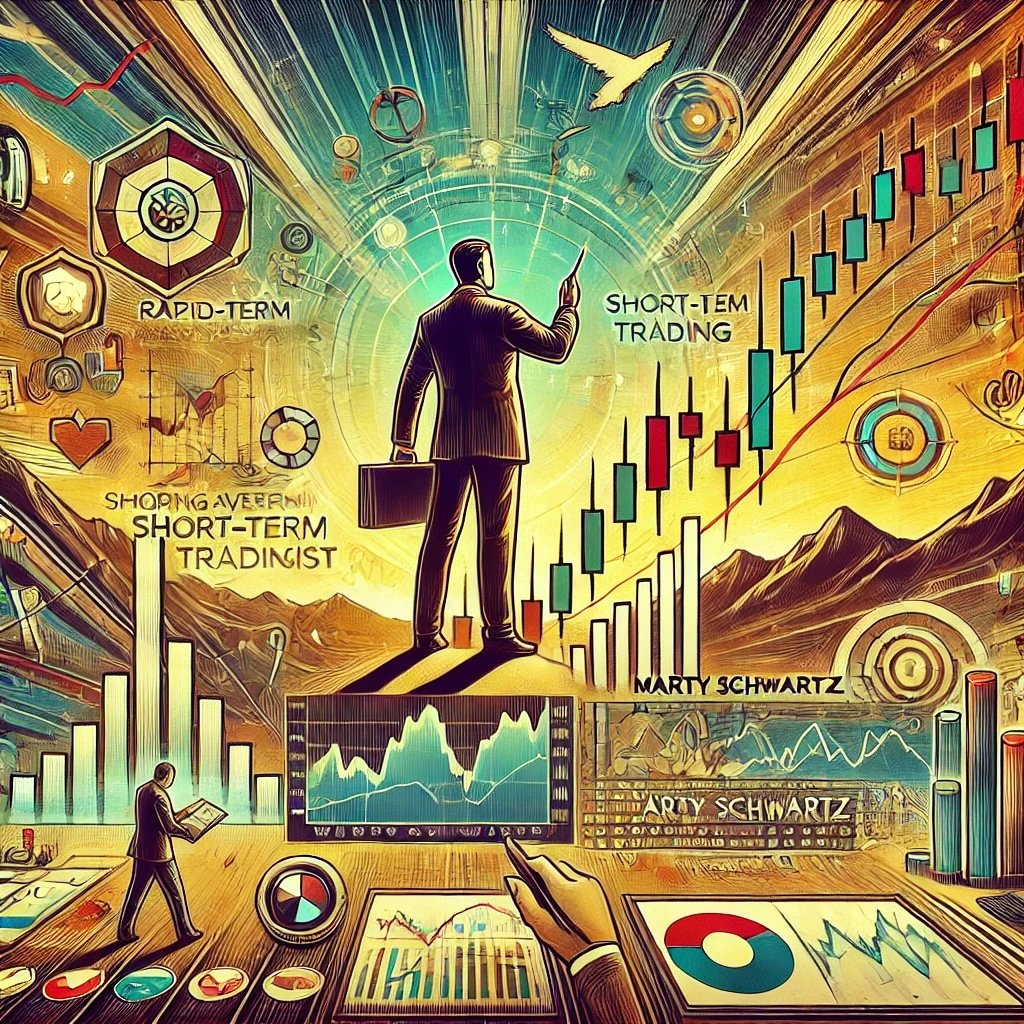As we venture further into the innovative world of financial investment, we are introduced to the broad and intriguing realm of Thematic ETFs, or Exchange Traded Funds. Much like the kaleidoscope of a diverse portfolio, Thematic ETFs invite investors to explore the market through a variety of thematic lenses. They represent a shift away from traditional investment approaches based on geographies or sectors, and towards ones based on identifiable narratives and trends.
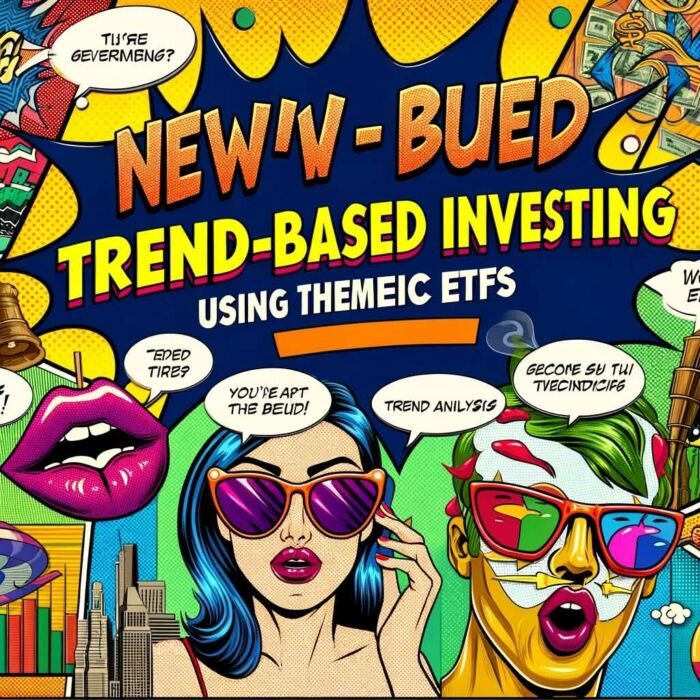
Thematic ETFs are not just a financial product; they are a statement of perspective. They encapsulate the burgeoning influence of emergent macro-level trends such as technological advancements, climate change solutions, and demographic shifts, to name a few. In essence, these ETFs offer investors the opportunity to invest in companies across various sectors that are poised to benefit from these transformative, long-term trends. Think of these as thematic baskets of stocks. The themes can range from AI and robotics to clean energy, from cyber security to healthcare innovations, and much more.

Growing Trend Of Thematic Investing
Now, why is this concept buzzing in the world of investing? The growing trend of thematic investing can be attributed to its two-pronged appeal. On one hand, it satiates the investor’s appetite for economic gains by capitalizing on promising trends. On the other, it resonates with their belief system and societal views. Thematic investing allows investors to be part of something bigger than themselves, thus aligning their financial interests with their personal values. This shift is especially pronounced among the younger generation of investors who are not just money-wise, but also world-wise.
Moreover, the power of thematic investing and consequently, Thematic ETFs, cannot be overstated in today’s globalized and interconnected world. As the world grapples with complex challenges and transitions, from dealing with aging populations to the race for digitization and sustainability, thematic investing offers a unique proposition. It enables investors to participate in these societal shifts, while potentially reaping financial rewards.
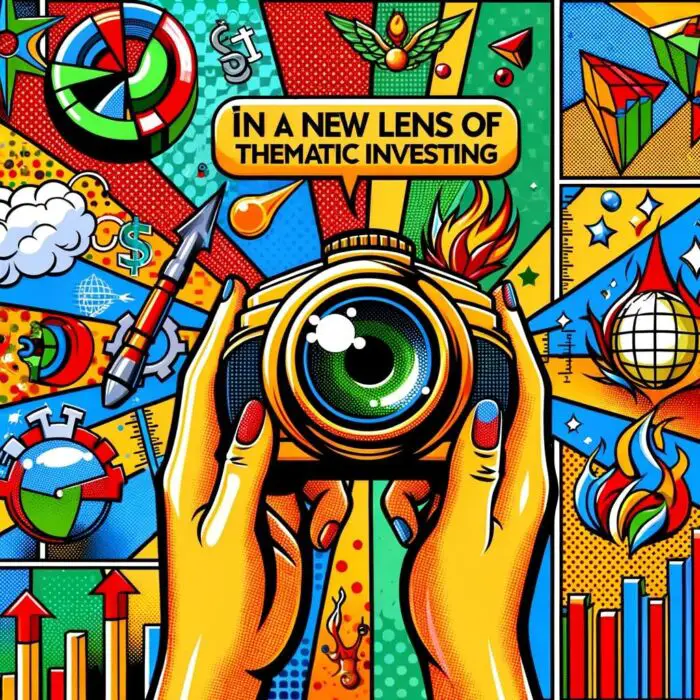
New Lens Of Thematic Investing
For new investors, understanding Thematic ETFs is like receiving a new lens to view the world of investing—a lens that focuses on themes and trends rather than just sectors or countries. They offer a great way to diversify portfolios and mitigate risk, while also enabling participation in the financial growth of key transformative trends. Moreover, Thematic ETFs can serve as a launchpad for new investors to engage in conscious capitalism, by supporting companies that are driving change and addressing major societal and environmental issues.
However, as with any investment, it is crucial to understand what lies beneath the hood of Thematic ETFs. One must grasp the theme’s potential for growth and the associated risks, the ETF’s expense ratios, and the balance and diversity within its holdings. Additionally, understanding how these ETFs fit within your broader portfolio and investment goals is key. New investors must remember that while Thematic ETFs provide an exciting avenue for investment, they should not be mistaken for a silver bullet. They are a part of the investment mosaic, not the entire picture.
In essence, Thematic ETFs represent the dawn of a new era in investing—an era characterized by greater flexibility, purposeful investment, and the ability to connect macro-level trends with micro-level investment decisions. By understanding Thematic ETFs, new investors not only equip themselves with a powerful tool for financial growth, but also engage with the global narrative in a more meaningful way.

Understanding Exchange-Traded Funds (ETFs)
Before we dive deeper into the captivating waters of Thematic ETFs, it’s essential to understand the lifeboat that carries us through these waters – the Exchange-Traded Fund, or as it is more commonly known, the ETF.
At the most basic level, an ETF is a type of fund that owns assets like stocks, bonds, or commodities, and divides ownership of those assets into shares. In essence, it’s a basket of securities that you can buy or sell through a brokerage firm on a stock exchange, much like you would a regular stock. Yet, beneath this simple explanation lies the compelling beauty of ETFs – their unique blend of simplicity, versatility, and efficiency.
The importance of ETFs in the investment world is akin to the role of the conductor in an orchestra. They are powerful tools that bring harmony and balance to your portfolio. They offer the diversification benefits of mutual funds, as they hold a range of assets, but with the added advantage of being tradable like individual stocks. This means you can buy or sell shares in an ETF whenever the stock market is open, providing investors with liquidity and flexibility.

ETFs Changed The Game For Investors
But the magic of ETFs doesn’t stop there. They are also known for their cost-effectiveness, largely due to their “passive” management style. Most ETFs are designed to track the performance of a specific index, like the S&P 500, rather than outperform it. This means they typically have lower expense ratios compared to actively managed funds. Furthermore, ETFs offer transparency, as they disclose their holdings on a daily basis, and tax efficiency, due to their unique structure.
Now that we’ve established a basic understanding of ETFs, let’s delve into the difference between thematic and traditional ETFs.
Traditional ETFs, like the ones we’ve been discussing, typically track a benchmark index. These indices are usually based on a specific asset class, sector, or geographic region. For example, an ETF might track the NASDAQ-100 Index, which includes 100 of the largest domestic and international non-financial companies listed on the NASDAQ Stock Market. Traditional ETFs provide broad market exposure and are often used to create a diversified core for an investment portfolio.
Thematic ETFs, on the other hand, are a vibrant offshoot of the ETF universe. They add a dash of color to the black and white world of traditional investing. Unlike their traditional counterparts, thematic ETFs do not track a benchmark index based on a specific asset class, sector, or region. Instead, they are designed around a particular theme or trend. These themes could be tied to anything from a technological revolution like artificial intelligence, to environmental concerns like clean energy, or societal changes like the aging population.
Thematic ETFs are not bound by sectors or geographies. Instead, they include companies, often from various sectors and regions, that stand to benefit from the specific theme or trend. This makes them fundamentally different from traditional ETFs. They offer a unique way to capitalize on future trends and macro-level developments, potentially delivering significant growth.
However, it’s crucial to remember that while thematic ETFs provide an exciting investment prospect, they also carry unique risks. Themes could change or evolve, and the companies chosen may not necessarily benefit as expected. Therefore, these ETFs require thorough research and understanding.
To sum it up, understanding ETFs, both traditional and thematic, is akin to learning the language of modern investing. This language allows you to converse with the market, comprehend its nuances, and construct your financial future. By acknowledging the differences between traditional and thematic ETFs, you are not just expanding your vocabulary, but are also appreciating the evolving narrative of the investment world.
source: iShares by BlackRock on YouTube
Deep Dive into Thematic ETFs
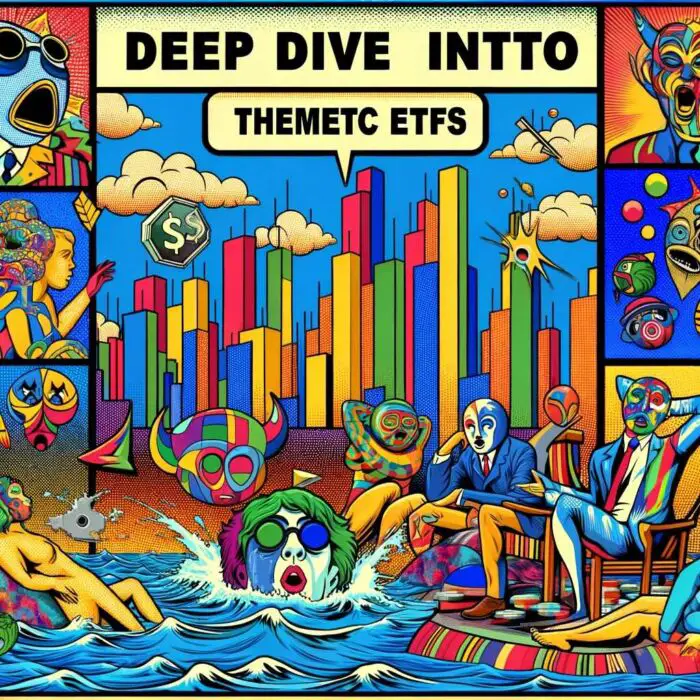
In the ocean of financial instruments, Thematic ETFs stand out like radiant, exotic fish, their bright colors capturing the attention of every observer. They are a new breed of investment vehicles that are not just about diversification or low-cost indexing, but about a more nuanced and visionary approach to investing.
As we delve deeper, Thematic ETFs are funds that aim to capitalize on broad, disruptive macro-level trends across sectors and geographies. They go beyond traditional parameters such as market capitalization, industry sectors, or geographic locations, and instead focus on themes, narratives, and forward-looking trends. These themes could be anything from blockchain technology and autonomous vehicles to genomics and clean energy. They consist of an array of companies that stand to benefit from these themes, regardless of their traditional industry classification or where they are located.
Now, the fascinating thing about these ETFs is not just the themes they represent, but the criteria used to select these themes. Thematic ETF providers are akin to futurists, constantly scanning the horizon for emerging trends that have the potential to disrupt industries and economies. They are not simply looking for popular or interesting topics. They are looking for transformative forces with the potential to unfold over the next decade or more.
Several factors are considered when identifying and selecting these themes. They include the theme’s potential for growth, its longevity, its impact across sectors and geographies, its investability, and its relevance to fundamental economic or societal changes. ETF providers also analyze the number and diversity of companies that can be included within the theme. Each theme is carefully chosen based on rigorous research and analysis, ensuring that it is not a temporary fad, but a long-term trend.
This brings us to the exciting part: how Thematic ETFs reflect future trends and technologies. Thematic ETFs are like crystal balls, offering investors a glimpse into the future. They capture the zeitgeist of our times and project it onto the investment landscape.

AI and Thematic ETFs
Take, for instance, a thematic ETF focused on artificial intelligence (AI) and robotics. Such an ETF might include companies that are at the forefront of AI research and development, manufacturers of robotics, and firms that provide key hardware and software components. Investing in this ETF means buying into the idea that AI and robotics will play an increasingly significant role in our lives and economy, from autonomous vehicles and smart homes to healthcare and manufacturing.
Similarly, a thematic ETF focused on clean energy might include companies producing renewable energy technologies, energy storage solutions, and electric vehicles, as well as those involved in the associated supply chains. An investment in this ETF represents a belief in the transition towards a more sustainable energy future.
These ETFs, therefore, serve as conduits for investing in the future. They allow investors to position their portfolios towards long-term trends that could shape our world in the years to come. They offer the opportunity not just to participate in these trends, but to potentially profit from them.
However, it is important to remember that the future is not always easy to predict, and not all trends pan out as expected. Therefore, investing in Thematic ETFs should be accompanied by diligent research, a clear understanding of the risks involved, and a view of how these investments fit within one’s broader portfolio and investment objectives.
In essence, Thematic ETFs represent a shift towards a more visionary form of investing—one that is not just about numbers and percentages, but about ideas, narratives, and the world of tomorrow. They showcase the beauty of investing, not just as a financial act, but as an act of belief in future trends and innovations.
source: VettaFi on YouTube
Advantages of Thematic ETFs
In the grand tapestry of investing, Thematic ETFs are the vibrant threads that add depth, texture, and brilliance. They provide a fresh perspective to the investment landscape and offer unique advantages that make them an attractive proposition for the modern, forward-looking investor.
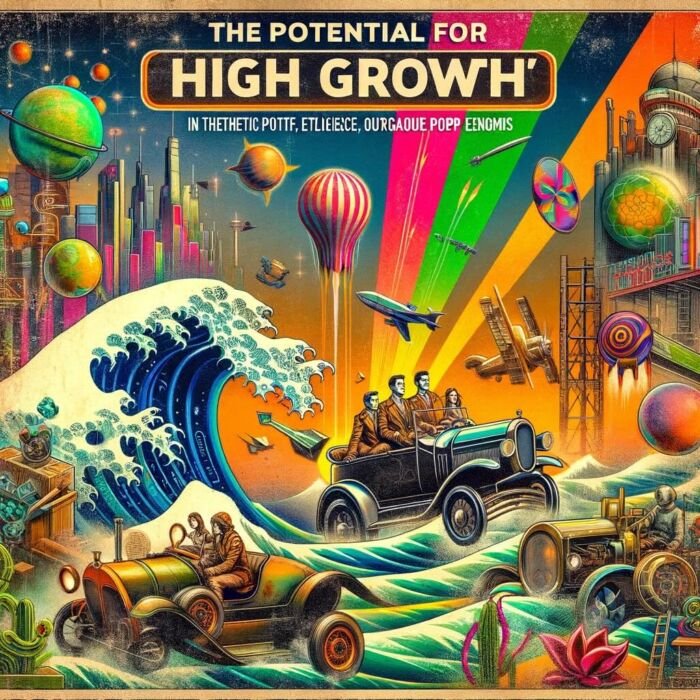
Potential for High Growth
The first advantage of Thematic ETFs lies in their potential for high growth. Like adventurers embarking on an epic journey, these ETFs are not seeking well-trodden paths; they are looking for emerging trends with the potential to reshape our world. Whether it’s the rise of artificial intelligence, the push towards renewable energy, or the breakthroughs in genomics, these ETFs aim to ride the wave of transformative trends that are expected to grow exponentially in the years to come.
By their very nature, Thematic ETFs are forward-looking. They provide investors with a chance to participate in trends that could become mainstream in the future. Therefore, they have the potential to deliver superior returns compared to traditional ETFs that are more focused on existing, established markets. However, it’s essential to remember that high growth potential also comes with higher risk. Hence, Thematic ETFs should be considered as part of a diversified portfolio and in line with an investor’s risk tolerance.

Access to Cutting-Edge Sectors
Thematic ETFs also offer investors access to cutting-edge sectors and industries, often before they become mainstream. In the fast-paced world of technology and innovation, new sectors are continually emerging. These sectors, whether it’s blockchain technology, autonomous vehicles, or space exploration, often represent the frontier of human innovation and progress.
Thematic ETFs provide a convenient and accessible way for average investors to gain exposure to these sectors. Without these ETFs, investing in such sectors could be complex, risky, and capital-intensive. But by pooling various related companies under one theme, these ETFs allow investors to invest in the future, in a manner that is not only exciting but also prudent and manageable.
Opportunity for Diversification
In the garden of investment, diversification is the magic fertilizer that helps your portfolio grow while mitigating risks. Thematic ETFs offer excellent opportunities for diversification because they are not confined to a particular sector or region. Instead, they span across industries and countries, choosing companies based on their relevance to a specific theme or trend.
Consider a Thematic ETF focused on clean energy. It might include a solar panel manufacturer in the US, a wind turbine producer in Germany, and a battery storage company in South Korea, along with many others. This cross-sectional composition helps spread the risk and reduces the impact if any single sector or geography performs poorly.
Moreover, Thematic ETFs also offer diversification in terms of ideas and trends. Each ETF represents a different theme, providing investors with the opportunity to diversify their portfolios based on their beliefs, interests, and predictions about the future.
In summary, Thematic ETFs are like the bold strokes in the painting of your investment portfolio. They add elements of high growth potential, access to exciting new sectors, and opportunities for diversification. They embody the spirit of the future, offering a unique blend of excitement, potential, and prudence. But, as with any bold stroke, they must be used wisely and in a balanced manner, so as not to overshadow the other crucial aspects of your investment masterpiece.
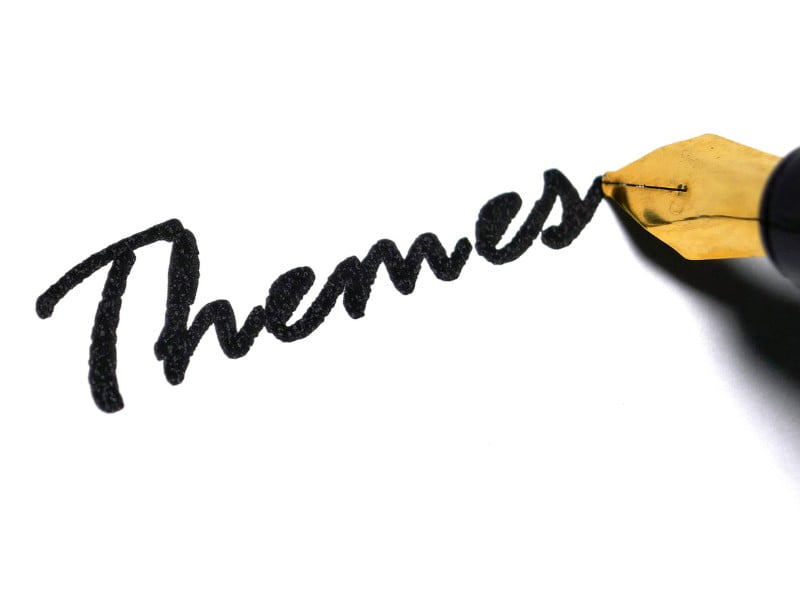
Case Studies of Successful Thematic ETFs
As we embark on the exciting journey to explore the landscape of Thematic ETFs, let’s take a detour and visit some of the impressive landmarks along the way. These are the stories of a few top-performing Thematic ETFs, their unique strategies, and the factors that have contributed to their success.
source: Equity Mates on YouTube
Review of Top-Performing Thematic ETFs
- ARK Innovation ETF (ARKK): ARKK, managed by ARK Invest, is a standout example of a successful Thematic ETF. This fund focuses on disruptive innovation and includes companies that are poised to drastically change the way the world works. Holdings span across sectors like genomics, automation, artificial intelligence, and more. ARKK has been recognized for its outstanding performance over the past few years.
- Global X Robotics & Artificial Intelligence ETF (BOTZ): BOTZ has capitalized on the rising trend of robotics and AI, two areas that are becoming increasingly influential in a variety of industries. This fund invests in companies that stand to benefit from increased adoption and utilization of robotics and artificial intelligence.
- iShares Global Clean Energy ETF (ICLN): Riding the wave of the green revolution, ICLN provides exposure to companies that produce energy from solar, wind, and other renewable sources. As climate change becomes a more pressing issue, this fund stands to benefit from increased investment in renewable energy solutions.
Analysis of Their Investment Strategy
- ARKK’s strategy centers around the idea of ‘disruptive innovation’. This involves identifying and investing in companies that are leaders, enablers, or beneficiaries of disruptive innovation, which ARK defines as the introduction of a technologically enabled product or service that has the potential to change an industry landscape.
- BOTZ’s strategy is rooted in the belief that robotics and artificial intelligence are transformative technologies with significant growth potential. The fund seeks out companies that are key players in these sectors, both from a hardware and software perspective.
- ICLN’s strategy hinges on the global shift towards renewable energy. The fund aims to invest in companies worldwide that are involved in the clean energy sector, including those in the business of advancing the technology and distribution of renewables.
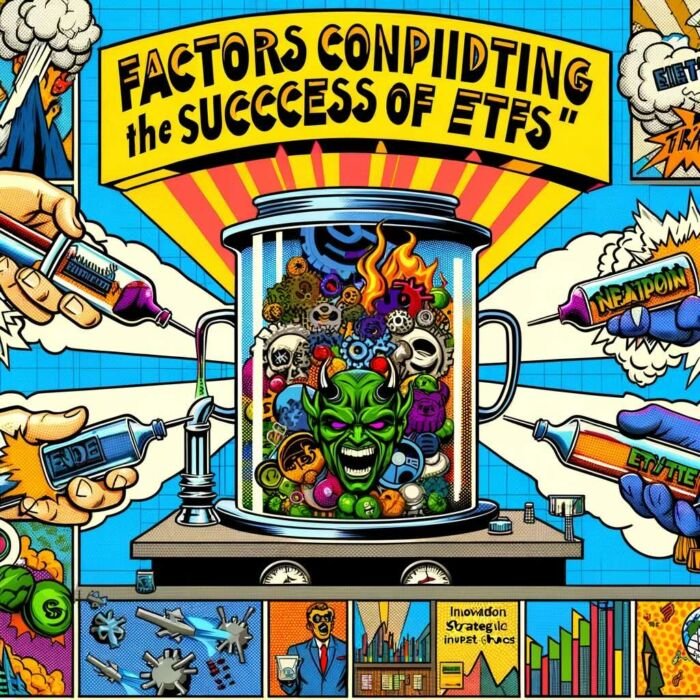
Factors Contributing to Their Success
Each of these ETFs has had their unique recipe for success, but there are a few common ingredients.
First, each of these ETFs has latched onto a significant, long-term trend: disruptive innovation, robotics and AI, and renewable energy. These are trends that are shaping our world and have significant growth potential.
Second, these funds have adopted a forward-looking approach, identifying companies that are not just part of these trends, but are at the forefront, driving these changes. This proactive strategy has allowed them to capitalize on these trends before they become mainstream.
Lastly, these ETFs have effectively utilized the benefits of the ETF structure – transparency, liquidity, and diversification. By offering a diversified portfolio of companies within each theme, they have provided investors with a balanced way to access these cutting-edge sectors.
In essence, these successful Thematic ETFs serve as guideposts, lighting the way for investors navigating the world of thematic investing. They exemplify the power of a forward-looking, trend-focused, and balanced investment strategy. However, their success also underscores the need for careful research and understanding when investing in such ETFs, reminding us that success in the investment world is often a blend of insight, foresight, and a little bit of luck.
source: Ben Felix on YouTube
Risks and Limitations of Thematic ETFs
As we navigate through the exciting world of Thematic ETFs, it’s vital not to get so captivated by the shimmering prospects that we overlook the potential pitfalls along the way. Every investment, no matter how promising, carries its unique set of risks and limitations. Thematic ETFs, with their innovative approach and focus on future trends, are no exception.

The Possibility of Theme Fading Over Time
One of the primary risks of Thematic ETFs revolves around the central concept that makes them so intriguing—their themes. As these ETFs are built around specific trends or themes, their success is inherently tied to the longevity and evolution of these themes.
Just like a bestselling novel that everyone’s talking about today can become yesterday’s news, an investment theme can also fade over time. Trends can change, technology can evolve, and what once seemed like a revolutionary idea can become obsolete. For instance, an ETF focused on the trend of 3D printing might face challenges if the technology doesn’t evolve as expected or if a new, disruptive technology supersedes it.

Risk of High Volatility
Thematic ETFs can often be more volatile than their traditional counterparts. As they focus on cutting-edge sectors and industries, they are frequently exposed to the ups and downs that come with uncharted territories. For example, a Thematic ETF focused on the cannabis industry may experience significant fluctuations due to changes in regulations, societal attitudes, and medical research.
Moreover, these ETFs often have a higher concentration in smaller, growth-oriented companies, which can be more volatile than larger, established firms. Therefore, while Thematic ETFs offer the potential for high returns, they also carry the risk of significant price swings, making them a more adventurous ride for investors.
Lack of Historical Data for Analysis
Another challenge with Thematic ETFs is the lack of historical data for analysis. As these funds are focused on new, emerging trends, there isn’t a long track record that investors can study. This lack of history makes it challenging to evaluate their performance, assess their risks, and compare them with other investment options.
Furthermore, the lack of historical data can make it difficult to predict how these ETFs will react to different market conditions. For instance, if an ETF is focused on a new technology that has not yet gone through a full economic cycle, it may be uncertain how the ETF will perform during a recession or a market downturn.
In the grand narrative of investing, Thematic ETFs are the thrilling plot twists that keep us on the edge of our seats. They open up new horizons, bring vibrancy and dynamism, and offer the potential for high growth. However, like any good plot twist, they also introduce elements of uncertainty and risk. Therefore, it’s essential for investors to understand these risks, consider their own risk tolerance and investment goals, and seek professional advice if needed. Because, in the end, successful investing is not just about following the trends, but about crafting a story that aligns with your unique character, circumstances, and dreams.
How to Incorporate Thematic ETFs into Your Investment Portfolio
Imagine you’re crafting a beautiful mosaic – an artwork where each tile has its unique color, shape, and texture, but when arranged carefully, they create a stunning, cohesive masterpiece. This is similar to building your investment portfolio, and Thematic ETFs can be the vibrant, intriguing tiles that add a distinct touch to your creation. However, adding these unique tiles requires careful thought, an understanding of their attributes, and an idea of how they fit into your overall design. Let’s explore how you can effectively incorporate Thematic ETFs into your investment portfolio.
Assessing Your Risk Tolerance and Investment Goals
Before adding Thematic ETFs into your portfolio, it’s essential to understand your risk tolerance and investment goals. Thematic ETFs can be exciting and potentially high-growth investments, but they also come with a unique set of risks, as we discussed earlier.
Therefore, an assessment of your risk tolerance—your ability and willingness to withstand declines in your investments—should be the starting point. If you’re a risk-averse investor, you may want to limit your exposure to Thematic ETFs or choose themes that align more closely with established sectors.
Your investment goals are equally important. If you are investing for a short-term goal, the potential volatility of Thematic ETFs might not be suitable. However, if you are investing for the long term, and especially if you are interested in specific future trends, Thematic ETFs could be a compelling addition to your portfolio.

The Importance of Research and Staying Up-to-Date with Trends
Incorporating Thematic ETFs into your portfolio isn’t a ‘set-it-and-forget-it’ strategy. Given their focus on evolving trends, it’s crucial to stay informed about the developments within these trends. Just as a sailor continuously monitors the wind and weather, an investor in Thematic ETFs must keep track of the trends shaping their investments.
Additionally, researching the specific ETF is also important. Understanding its investment strategy, underlying index, the diversity of holdings, fees, and the track record of the fund manager can provide insights into what to expect from the ETF.
Balancing Thematic ETFs with Other Types of Investments
While Thematic ETFs can add color and dynamism to your portfolio, they should not overshadow the other elements of your mosaic. Thematic ETFs are most effective when used as part of a diversified portfolio, balanced with other types of investments.
This might mean complementing Thematic ETFs with more traditional ETFs focused on broad market indices or specific sectors. Or it might mean balancing them with bonds, commodities, or real estate investments. The key is to ensure that the potential higher risk and volatility of Thematic ETFs are offset by other, more stable investments.
Incorporating Thematic ETFs into your portfolio is like adding a dash of spice to a recipe—it can enhance the flavor, but it should be used judiciously, keeping in mind the overall balance and harmony. When used wisely, Thematic ETFs can allow you to express your beliefs about future trends, add potential growth to your portfolio, and make your investment journey more engaging and personal. So, as you craft your investment mosaic, consider whether these vibrant tiles have a place in your masterpiece.
source: Nasdaq on YouTube
Conclusion: Thematic ETFs are and their potential benefits and risks

Like the final notes in a symphony, bringing together the melodies and motifs introduced throughout the composition, we’ve reached the conclusion of our exploration into the captivating world of Thematic ETFs. It’s time to step back and appreciate the fascinating panorama we’ve charted, the valleys and peaks of opportunities and risks, and the myriad pathways through the terrain of investing.
Thematic ETFs, as we’ve discovered, are a special breed of investment vehicles. They aren’t content to merely ride along the well-traveled highways of broad market indices. Instead, they’re eager to set sail on the sea of emerging trends and innovations, seeking to harness the winds of change for potential growth. Their allure lies in their promise of being part of the future, their potential for high returns, and their power to diversify your portfolio not just across sectors, but across ideas and trends.
Yet, as with any expedition into uncharted territories, investing in Thematic ETFs carries its unique set of risks. The themes they latch onto could fade, the volatility they may experience could be unsettling, and the lack of historical data can make the journey seem like you’re navigating without a compass.

Informed Decision Making Regarding Thematic ETFs
But fear not, intrepid investor! The key to journeying through this landscape lies in continued learning, careful consideration, and informed decision-making. It requires understanding your risk tolerance and investment goals, keeping up-to-date with evolving trends, and balancing your portfolio to create a harmonious blend of investments.
Investing, after all, is not just about numbers and returns—it’s also about curiosity, learning, and engagement with the world around us. It’s about expressing our beliefs, dreams, and aspirations for the future. Thematic ETFs offer a unique opportunity to do just that. They invite you to be part of the unfolding story of innovation and progress, to add your unique brushstrokes to the grand canvas of the future.

So, dear investor, continue to learn, explore, and invest wisely. Remember, the world of investing, much like life itself, is not a sprint but a marathon—a journey to be undertaken with patience, wisdom, and a zest for discovery. As you venture forth, may your journey be as rewarding as the destination!
12-Question FAQ: Thematic ETFs — A Newbie’s Guide to Trend-Based Investing
What is a thematic ETF, in one sentence?
A thematic ETF bundles stocks (often across sectors and countries) that are expected to benefit from a single long-term trend—like AI, clean energy, cybersecurity, aging populations, or space.
How is a thematic ETF different from a sector or broad-market ETF?
Sector and market ETFs track established classifications (e.g., tech sector, S&P 500); thematic ETFs track a narrative that can cut across sectors and geographies and may change as the theme evolves.
Why do investors use thematic ETFs?
Two big reasons: return potential from secular trends and values alignment (investing in areas they believe in). They also offer convenient access to niche exposures that are hard to build stock-by-stock.
What are the main risks?
Themes can fade, performance can be volatile, portfolios may be concentrated, fees are often higher than core index funds, and valuation risk is common when narratives get crowded.
How do I evaluate whether a theme is investable?
Look for: 1) a clear economic driver (regulation, cost curves, demographics), 2) multi-year runway, 3) broad industry impact, and 4) enough public companies to build a diversified basket.
What should I check inside the ETF?
Theme purity: % of revenue tied to the theme
Index/methodology: rules for selection, weighting, rebalancing
Holdings: mix of enablers vs. beneficiaries, small vs. large caps
Fees & spreads: expense ratio, liquidity, premium/discount history
Are thematic ETFs passive or active?
Both exist. Many follow rules-based indexes (passive), while others are active. Read the fact sheet/prospectus to see how the manager adds or removes names as the story changes.
How much of my portfolio should be thematic?
Think “satellite,” not core: commonly 5–15% of equity allocation across several themes, sized to your risk tolerance. Keep your core in broad, low-cost index funds.
What’s a sensible time horizon?
Most themes are multi-year. If you need money soon, themes’ drawdowns can be painful. Match the holding period to the adoption curve (often 5–10+ years), with interim rebalancing.
How do I avoid overpaying for a hot theme?
Check valuation of top holdings (P/E, EV/Revenue, EV/EBITDA vs. history/peers), watch crowding after big inflows, and stagger entries (dollar-cost average) instead of going all-in.
How do I fit multiple themes together?
Diversify across uncorrelated trends (e.g., AI + clean energy + healthcare innovation), avoid double counting the same mega-caps, and set rebalance rules (e.g., quarterly or at 20–25% drift).
Any checklist before buying?
Thesis you can explain in two sentences
Runway (regulatory/tech/cost/behavioral tailwinds)
Methodology you trust + acceptable fee
Liquidity (AUM, spreads, average volume)
Exit/Review plan: when the thesis breaks or weights drift
Important Information
Comprehensive Investment Disclaimer:
All content provided on this website (including but not limited to portfolio ideas, fund analyses, investment strategies, commentary on market conditions, and discussions regarding leverage) is strictly for educational, informational, and illustrative purposes only. The information does not constitute financial, investment, tax, accounting, or legal advice. Opinions, strategies, and ideas presented herein represent personal perspectives, are based on independent research and publicly available information, and do not necessarily reflect the views or official positions of any third-party organizations, institutions, or affiliates.
Investing in financial markets inherently carries substantial risks, including but not limited to market volatility, economic uncertainties, geopolitical developments, and liquidity risks. You must be fully aware that there is always the potential for partial or total loss of your principal investment. Additionally, the use of leverage or leveraged financial products significantly increases risk exposure by amplifying both potential gains and potential losses, and thus is not appropriate or advisable for all investors. Using leverage may result in losing more than your initial invested capital, incurring margin calls, experiencing substantial interest costs, or suffering severe financial distress.
Past performance indicators, including historical data, backtesting results, and hypothetical scenarios, should never be viewed as guarantees or reliable predictions of future performance. Any examples provided are purely hypothetical and intended only for illustration purposes. Performance benchmarks, such as market indexes mentioned on this site, are theoretical and are not directly investable. While diligent efforts are made to provide accurate and current information, “Picture Perfect Portfolios” does not warrant, represent, or guarantee the accuracy, completeness, or timeliness of any information provided. Errors, inaccuracies, or outdated information may exist.
Users of this website are strongly encouraged to independently verify all information, conduct comprehensive research and due diligence, and engage with qualified financial, investment, tax, or legal professionals before making any investment or financial decisions. The responsibility for making informed investment decisions rests entirely with the individual. “Picture Perfect Portfolios” explicitly disclaims all liability for any direct, indirect, incidental, special, consequential, or other losses or damages incurred, financial or otherwise, arising out of reliance upon, or use of, any content or information presented on this website.
By accessing, reading, and utilizing the content on this website, you expressly acknowledge, understand, accept, and agree to abide by these terms and conditions. Please consult the full and detailed disclaimer available elsewhere on this website for further clarification and additional important disclosures. Read the complete disclaimer here.



